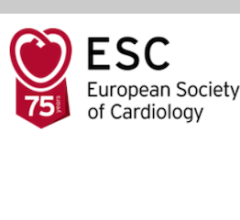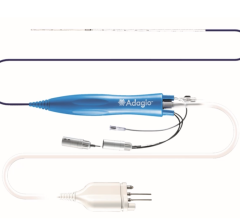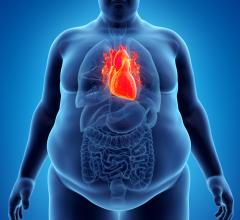
Getty Images
March 8, 2023 — Treatments for peripheral artery disease (PAD) were largely developed in men and are less effective in women, according to a review published today in European Heart Journal – Quality of Care and Clinical Outcomes, a journal of the European Society of Cardiology (ESC).1 The paper highlights the biological, clinical and societal reasons why the condition may be missed in women, who respond less well to treatment and have worse clinical outcomes.
“Greater understanding is needed about why we are failing to address the health outcome gap between genders,” said author Mary Kavurma, an associate professor at the Heart Research Institute, Australia. “This review encompasses not just biological reasons but also how healthcare services and women’s part in society may play a role. All of these elements should be taken into account so that more effective methods of diagnosis and treatment can be targeted at women with PAD.”
More than 200 million people worldwide have PAD,2 where arteries in the legs are clogged, restricting blood flow and raising the risk of heart attack and stroke. PAD is the leading cause of lower limb amputation. Evidence suggests that equal or greater numbers of women have the condition, and that they have worse outcomes. This review was conducted to identify the reasons for gender inequalities in PAD. The researchers compiled the best available evidence and used the World Health Organization model for analysis of gender-related needs in healthcare.3
The document starts with a summary of gender inequalities in the diagnosis and treatment of PAD. It then outlines the biological, clinical, and societal variables responsible for these gender-related disparities. Regarding diagnosis, PAD is classified into three phases: asymptomatic, typical symptoms of pain and cramping in the legs when walking that are relieved at rest (called intermittent claudication) and chronic limb-threatening ischemia (CLTI) which is the most severe stage and can include gangrene or ulcers. Women often have no symptoms or atypical ones such as minor pain or discomfort while walking or at rest. They are less likely than men to have intermittent claudication and twice as likely to present with CLTI. Hormones appear to play a role, as women tend to show typical symptoms (intermittent claudication) post-menopause. The ankle brachial index, which compares blood pressure in the upper and lower limbs, is used for diagnosis but is less accurate in those with no symptoms or smaller calf muscles.
Treatment of PAD includes medication, exercise and surgery. It aims to manage symptoms and reduce the risks of ulceration, amputation, heart attack and stroke. Women are less likely to receive recommended medications than men and respond less well to supervised exercise therapy. Women have lower rates of surgery and are more likely to die after amputation or open surgery than men.
As for the reasons for the above-mentioned inequalities, biological factors may contribute to sex differences in disease presentation, progression and response to treatment. For example, women have a higher risk of blood clots (a cause of PAD) and smaller blood vessels, while oral contraceptives and pregnancy complications have been linked with higher PAD rates.
Clinical factors refer to how patients engage with healthcare services, their relationships with physicians, and the processes in place to diagnose and treat PAD. The paper cites low awareness of the risk of PAD in females among healthcare providers and women themselves. Health staff are less likely to recognise PAD in women compared to men, and women are more likely than men to be misdiagnosed with other conditions including musculoskeletal disorders. Women tend to minimise their symptoms and are less likely to discuss PAD with their clinician. In the last 10 years, just one-third of participants in clinical trials of PAD treatment were women. One reason may be inclusion criteria requiring the presence of intermittent claudication, which is less common in females.
The review identified a number of societal variables that may contribute to gender inequalities in PAD. Lower socioeconomic status is associated with an increased likelihood of PAD and hospitalisation with PAD. In addition, the incidence of PAD is greater in low- and middle-income countries, rising most rapidly in women. The authors note that women have a lower socioeconomic standing than men in most nations in part due to reduced income and education levels, and caring responsibilities. “The higher poverty and socioeconomic disparities experienced by women globally may contribute to increased rates of PAD in women,” states the paper.
The authors point to the low proportion of female vascular surgeons and their underrepresentation in leadership roles and PAD guideline writing teams. There is also some evidence that female patients have better outcomes when treated by female clinicians. Co-author Associate Professor Sarah Aitken, a vascular surgeon and Head of Surgery at the University of Sydney, commented: “Whilst we are working on encouraging women to train as vascular surgeons, the current shortfall means that female patients are unlikely to see a surgeon of the same gender, and research, publications and policies may not fully represent the perspectives of women.”
Associate Professor Kavurma urged women not to ignore symptoms: “Pay attention to aches and pains in your calves when walking or at rest. Ask your GP how likely it is that you have PAD. Women tend to keep going and attribute sore legs to having a busy life. They need to stop and listen to their bodies.”
She concluded: “As a vascular biologist, my top research questions about PAD are: Why are women asymptomatic? Is the disease different between men and women, particularly before menopause? And why do women have worse responses to treatment? Answers to these questions are essential – how can physicians diagnose and treat PAD patients without understanding how the disease develops and whether it’s different between the sexes? To improve treatments, we also need clinical trials to be more inclusive of women.”
The ESC has been calling for awareness of gender differences in cardiovascular disease since 2008 with a Women in ESC campaign. Numerous activities have followed, including a focus on women and cardiovascular disease at ESC Congress 2011. The ESC hosts the only registry of pregnancy and cardiac disease (ROPAC). In 2022, the ESC Gender Policy was launched, providing targets for inclusion of female cardiologists and cardiovascular scientists in leadership positions and outlining measures to improve gender equality including promoting mentorship and career advancement.
For more information: www.escardio.org
References
1 Kavurma MM, Boccanfuso L, Cutmore C, et al. A hidden problem: peripheral artery disease in women. Eur Heart J Qual Care Clin Outcomes. 2023. doi:10.1093/ehjqcco/qcad011.
2 Fowkes FGR, Rudan D, Rudan I, et al. Comparison of global estimates of prevalence and risk factors for peripheral artery disease in 2000 and 2010: a systematic review and analysis. Lancet. 2013;382:1329–1340.
3 World Health Organization. 2003. Gender analysis in health: a review of selected tools. https://apps.who.int/iris/handle/10665/42600


 August 29, 2025
August 29, 2025 









